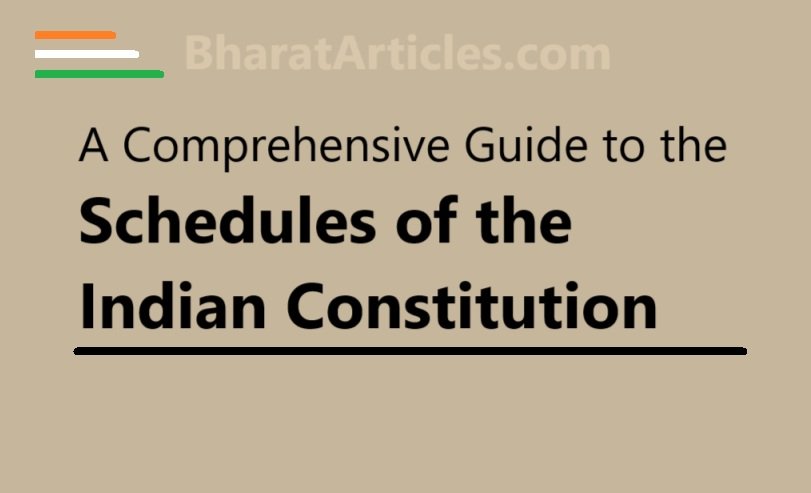
Introduction
The Indian Constitution is the supreme law of the land, containing various provisions that govern the country. One of its key structural elements is the set of schedules, which provide detailed lists and classifications related to governance, administration, and policy matters. Initially, the Constitution had eight schedules, but over time, amendments have increased the number to twelve. This article explores all twelve schedules, their significance, and their role in the Indian governance framework.
The Twelve Schedules of the Indian Constitution
1st Schedule: Names of States and Union Territories
This schedule contains the official names and territorial extents of the states and Union Territories of India. It has been amended multiple times to reflect the changing political boundaries due to state reorganization.
2nd Schedule: Provisions Related to Salaries and Allowances
The second schedule outlines the emoluments, allowances, and privileges of high-ranking officials, including:
- The President and Vice-President of India
- Governors of States
- Judges of the Supreme Court and High Courts
- The Speaker and Deputy Speaker of Lok Sabha and Legislative Assemblies
- The Chairman and Deputy Chairman of Rajya Sabha and Legislative Councils
3rd Schedule: Forms of Oaths and Affirmations
This schedule prescribes the oaths and affirmations for elected representatives, judges, and other government officials before assuming office.
4th Schedule: Allocation of Seats in Rajya Sabha
It provides a detailed allocation of seats for each state and Union Territory in the Rajya Sabha (Upper House of Parliament), based on their population.
5th Schedule: Administration of Scheduled Areas and Tribes
The fifth schedule deals with provisions for the administration and control of scheduled areas and tribes, empowering the President to establish Tribes Advisory Councils.
6th Schedule: Administration of Tribal Areas in the Northeast
It provides special provisions for the governance of tribal areas in Assam, Meghalaya, Tripura, and Mizoram, allowing the establishment of Autonomous District Councils (ADCs) with legislative and executive powers.
7th Schedule: Division of Powers Between Union and States
One of the most significant schedules, it divides powers between the Union and State governments through three lists:
- Union List: Subjects under the central government’s jurisdiction (e.g., defense, foreign affairs, atomic energy)
- State List: Matters under state government control (e.g., police, public health, agriculture)
- Concurrent List: Subjects where both the Union and State governments have authority (e.g., education, marriage laws, bankruptcy)
8th Schedule: Official Languages
This schedule lists the 22 officially recognized languages of India. Initially containing 14 languages, it has been expanded through amendments to include languages such as Sindhi, Konkani, Manipuri, and Bodo.
9th Schedule: Protection of Certain Laws from Judicial Review
Introduced by the First Amendment in 1951, the ninth schedule protects certain laws from being challenged in courts on the grounds of violating fundamental rights, particularly related to land reforms.
10th Schedule: Anti-Defection Law
Added by the 52nd Amendment Act in 1985, this schedule contains provisions for disqualification of members of Parliament and State Legislatures on the grounds of defection to maintain political stability.
11th Schedule: Powers, Authority, and Responsibilities of Panchayati Raj
Introduced by the 73rd Amendment Act of 1992, this schedule specifies the functional responsibilities of Panchayati Raj institutions, covering areas such as rural development, poverty alleviation, and water management.
12th Schedule: Powers, Authority, and Responsibilities of Municipalities
Added by the 74th Amendment Act of 1992, this schedule outlines the responsibilities of municipalities in urban governance, including town planning, waste management, and infrastructure development.
Conclusion
The twelve schedules of the Indian Constitution play a crucial role in structuring governance, administration, and legal frameworks across various domains. Understanding these schedules helps in comprehending the vast and intricate constitutional mechanisms that uphold the democratic structure of India. Over time, amendments have refined and expanded these provisions, ensuring that the Constitution remains relevant to India’s evolving socio-political landscape.







